Andile Dyalvane honours Xhosa culture in clay
Andile Dyalvane presents ‘iThongo’, a collection of ceramic pieces showcased through an exhibition at Friedman Benda, until 22 May 2021, and a documentary film following the designer back to his hometown

Friedman Benda presents Andile Dyalvane’s ‘iThongo’, a project featuring clay sculptural seats and vessels created as an homage to his ancestors and Xhosa culture.
Hailing from Eastern Cape, Dyalvane is one of the most prominent South African creatives working today. His medium of choice, clay, is used expressively throughout his oeuvre, developing a deep connection to his native land and the Xhosa culture of his family and ancestors.
Andile Dyalvane's ‘iThongo’: a collection driven by dreams of ancestors
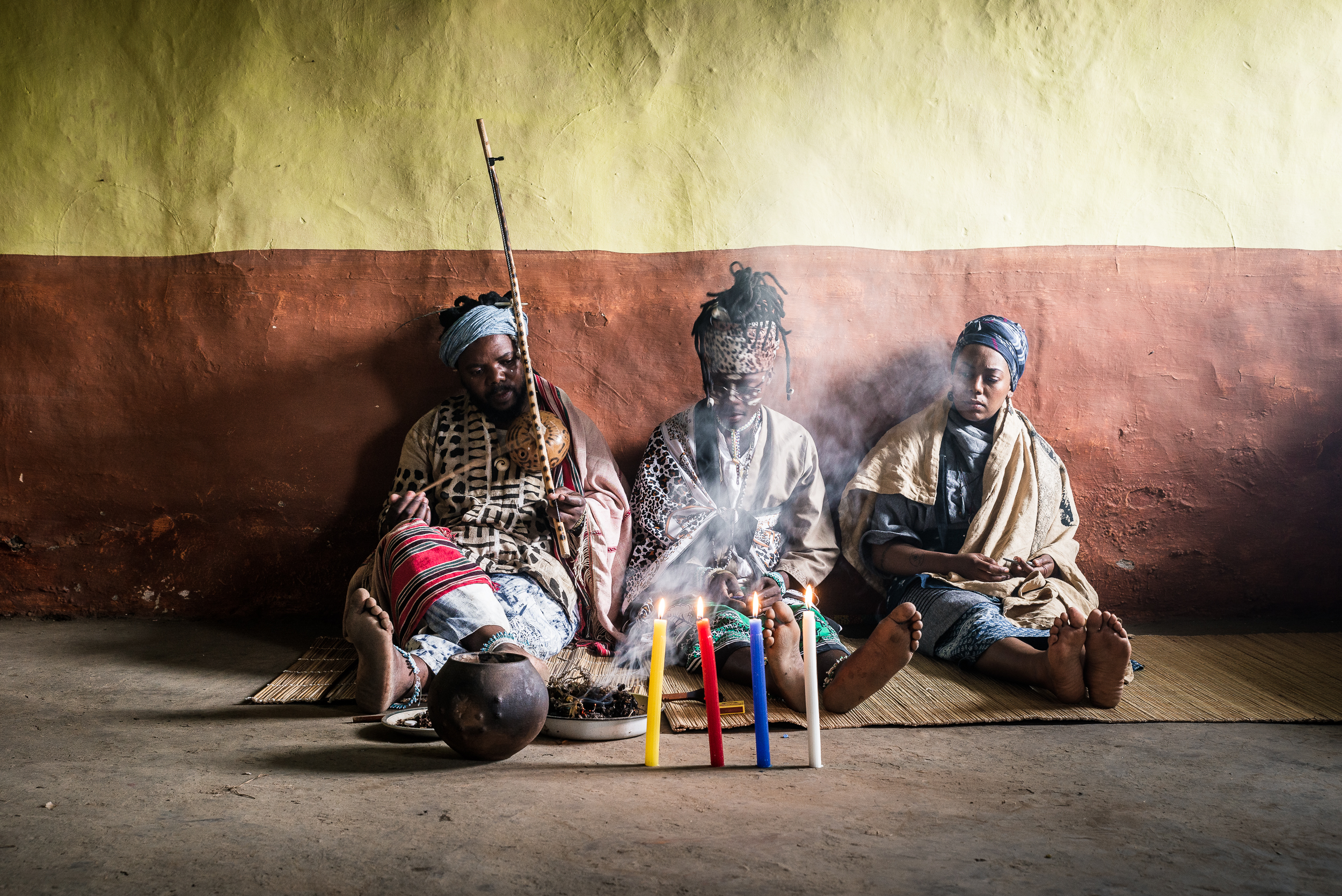
Andile Dyalvane, left, sitting with two members of his community during a trip to his home in Ngobozana, Eastern Cape
‘My intention with developing an extended body of work under the title “iThongo” is to highlight a gathering of dreams, seated in the soul, held by the spirits of our ancestors,’ says the designer. ‘The language of dreams is symbolic and therefore realised as uyalezo, messages from our ancestral spirits.’
‘iThongo’ means ‘ancestral dreamscape’ in Xhosa, and the title refers to the medium through which messages are traditionally transmitted from ancestors. The collection comprises a series of sculptural clay stools, chairs and benches, arranged in a circle as they would be during a traditional Xhosa ceremonial gathering, with a fire hearth and herbal offerings at the centre.
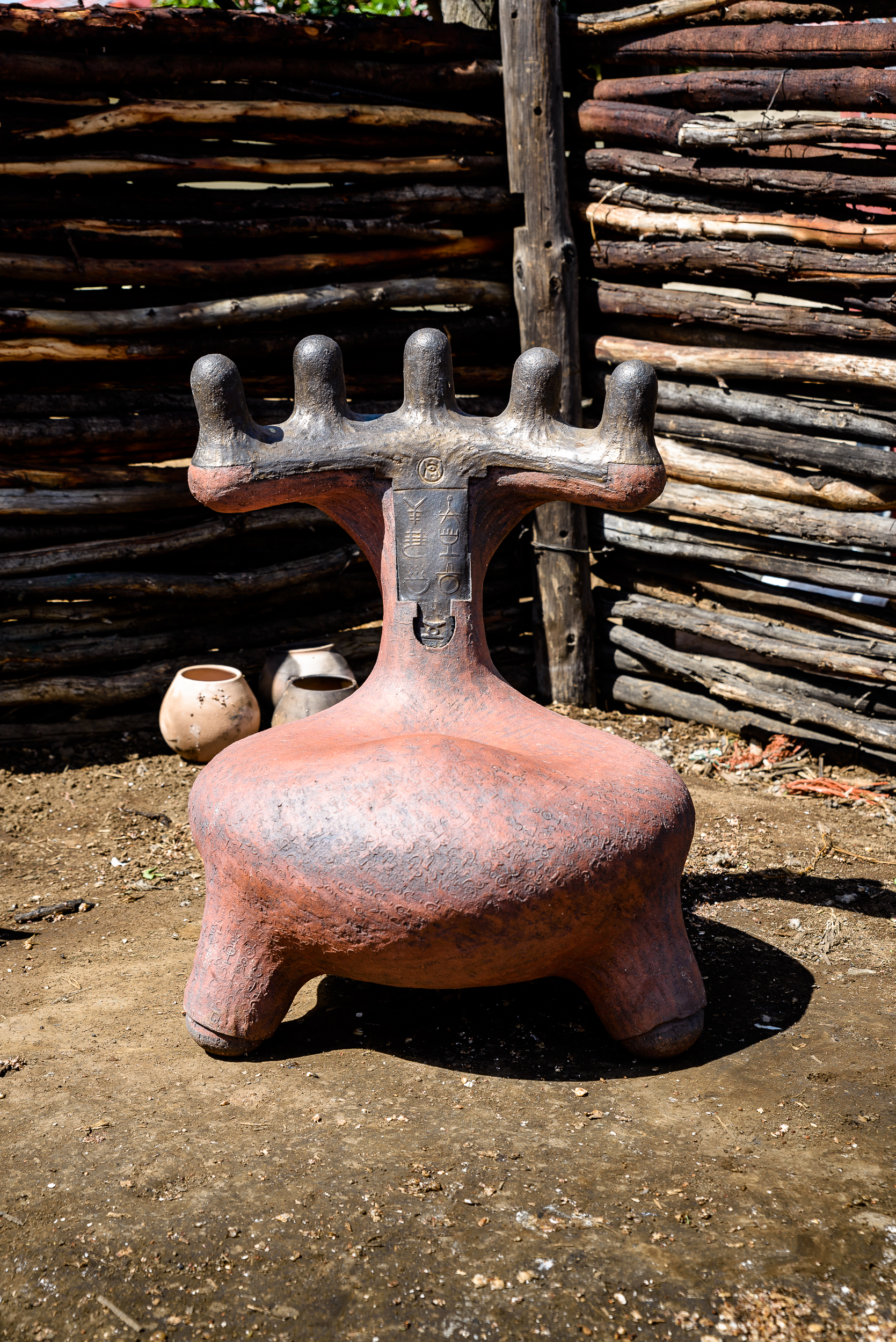
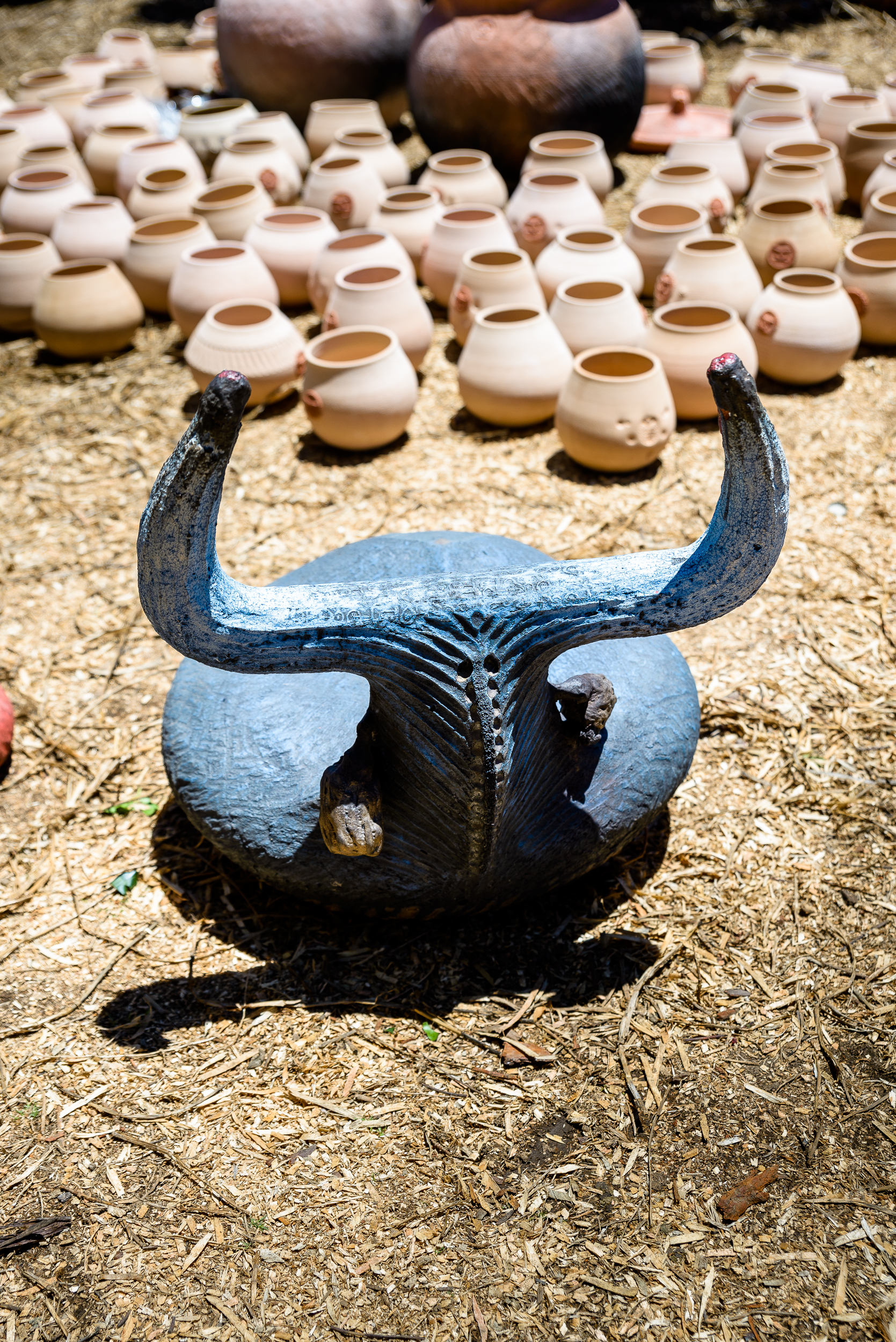
Top, ‘Umtshaleyo’ (meaning broom) from the ‘iThongo’ collection. ‘Brooms tend to be assigned a feminine energy, being a tool for both cleaning and cleansing the home,‘ says the designer. ‘My introduction to their vast number of uses came about primarily because tools are fascinating to me.’ Bottom, ‘Izilo’ (totem animals). ‘The importance of animal and human cohabitation has long been depicted within traditional oral folklore, myth and visual chronicling stories,’ says Dvalvane. ‘An assigned group of livestock to aid the homestead throughout clan-specific ceremonies.’
Through his work, Dyalvane is committed to preserve ancestral Xhosa knowledge, cultural traditions and language. ‘Whenever I start working in my studio, I call to my ancestors,’ explains Dyalvane. ‘It's a way of calling the spirit to be amongst us all in the space in order for me to get clarity as to what it is that they want me to communicate.’
Each piece is defined by a large base and expressive sculptural back rests, whose shapes were inspired by pictograms or glyphs representing words that are important in Xhosa life – from entshonalanga, meaning sunset, to izilo, the word representing totem animals. Dyalvane also selected words and concepts that relate to the natural world and touch upon universal human themes.
From the village to the gallery, the work is carrying the energy and essence of my home, of my ancestors
The designs take cues from Dyalvane’s memories of traditional African artefacts, and the low design of the seating references the earth as ‘an ancient portal for ancestral communion’. The recurring circular shapes also have an important meaning in Xhosa culture, the designer explains: circular geometry is believed to facilitate a free exchange of energy in Xhosa spiritual practices.
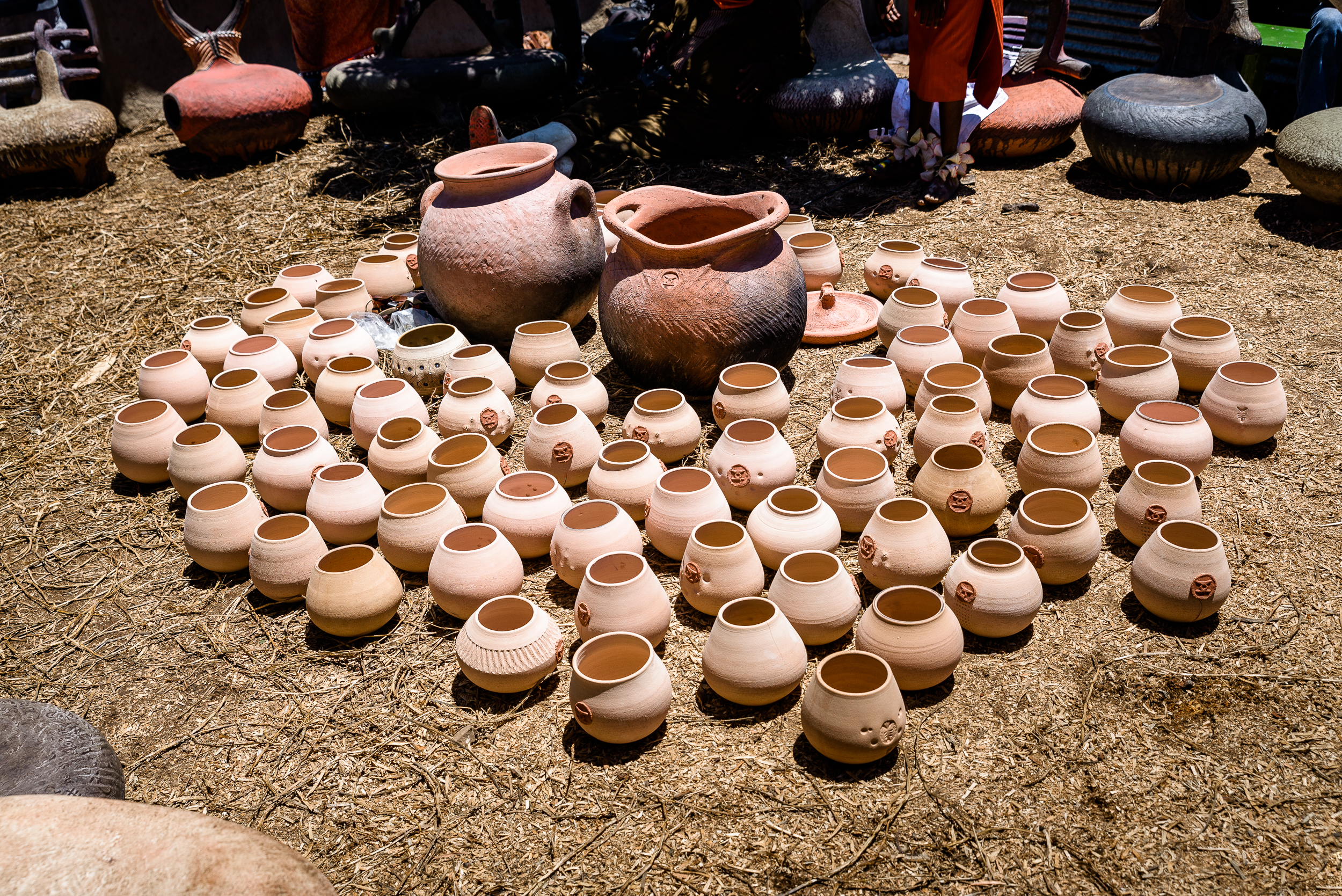
Traditional clay vessels featuring the pictograms or glyphs used by Dyalvane throughout his oeuvre
In November, the collection travelled to Dyalvane’s rural homestead in Ngobozana, Eastern Cape, so that his family and community could see it ahead of an exhibition at Cape Town’s Southern Guild, and before it was shown in New York. The trip is documented through a short film, and the project features collaborations between Dyalvane and local artists. Poet and traditional healer Sisonke Papu wrote about Dyalvane’s use of symbols for the exhibition catalogue, while sound healer and musician Nkosenathi Ernie Koela produced a musical composition mixing traditional instruments and sounds created by the pieces themselves. Textile artist Onesimo Bam created a collection of hand-painted indigo garments for the ceremonial presentation of his work to his village, and to gift to his elders.
‘From the village to the gallery, the work is carrying the energy and essence of my home, of my ancestors,’ says Dyalvane. ‘The manure, and the smoke, and the dung that you see and smell and sense, is the essence that makes the work.’
Watch: Andile Dyalvane's ‘iThongo’ travels to Ngobozana, Eastern Cape
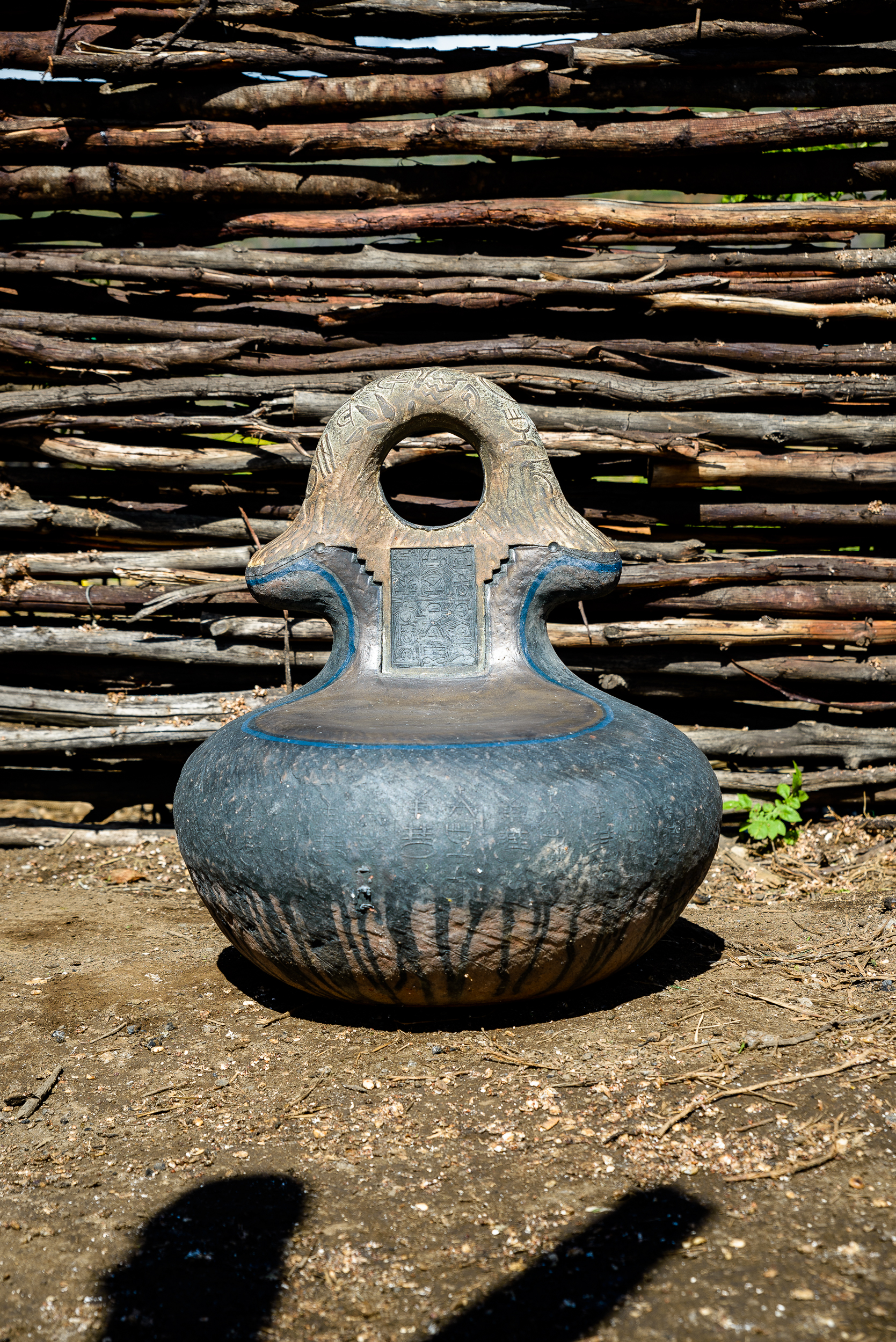
A stool inspired by sunset, titled ‘Entshonalanga’. Says Dyalvane: ‘Our forebears navigated via solar and celestial movements, through seasons that guided migration, diets, spiritual senses and healing practices that connected us cosmically to a greater awareness of purpose. We witness spectacular sunsets from my village situated atop a hill, whose shape like an “upside-down little basket” gives the village its name – Ngobozana. It’s a place where families sit outside on warm days to reflect and give thanks’
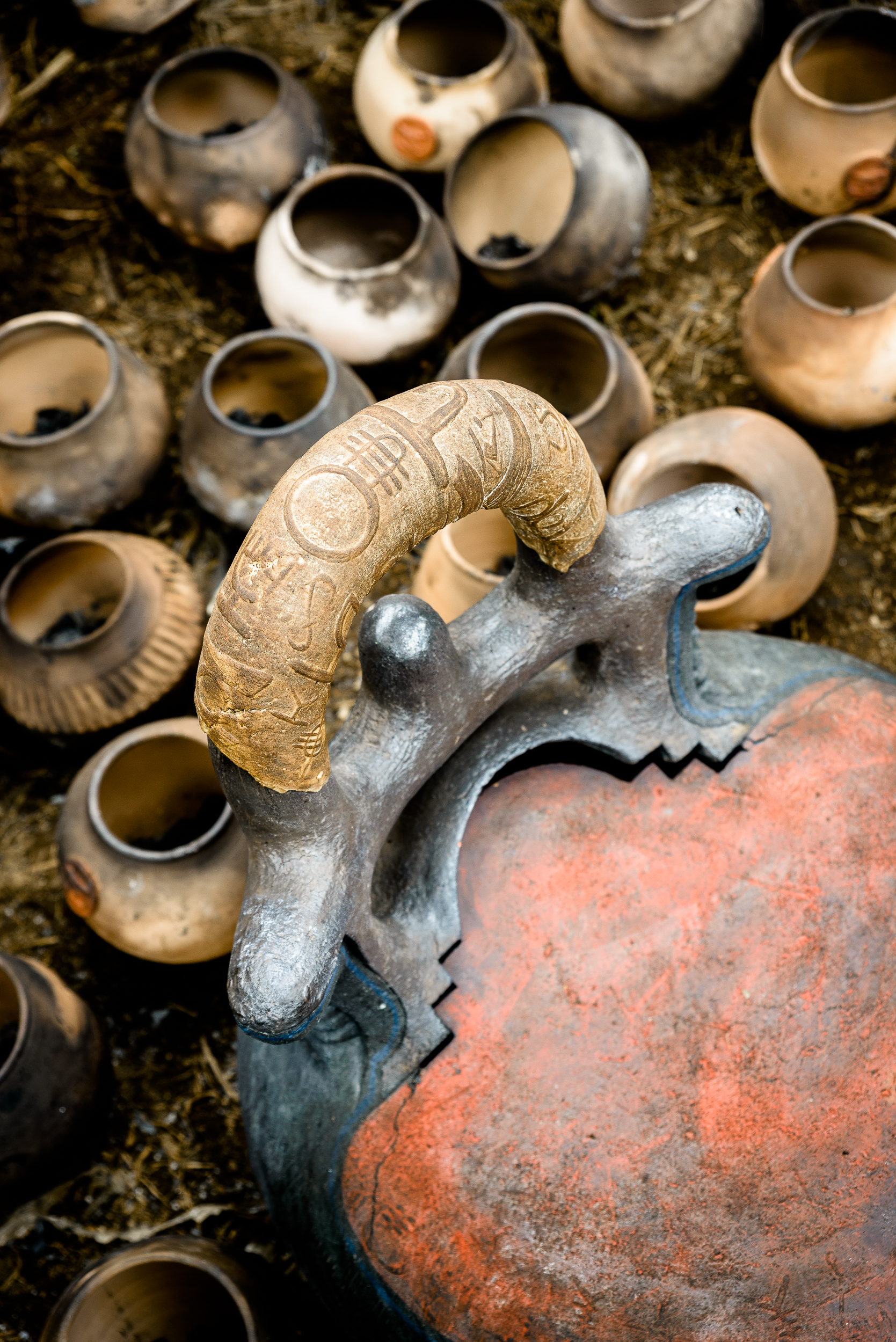
Detail shot of the ‘Ikhaya’ stool, meaning home. ‘Home is in essence familiarity,’ says the designer
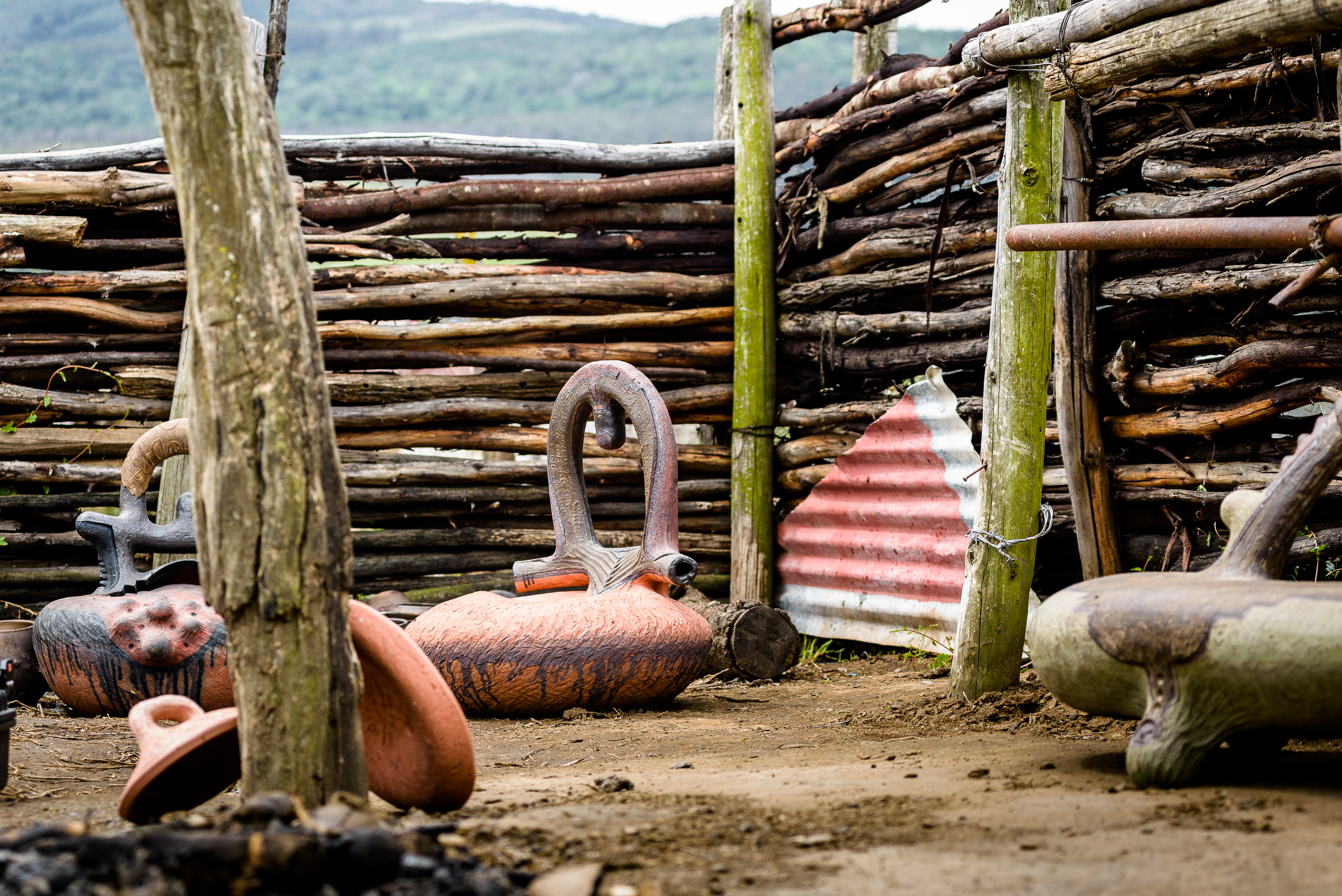
Pieces from the ‘iThongo’ collection photographed in Ngobozana, Eastern Cape
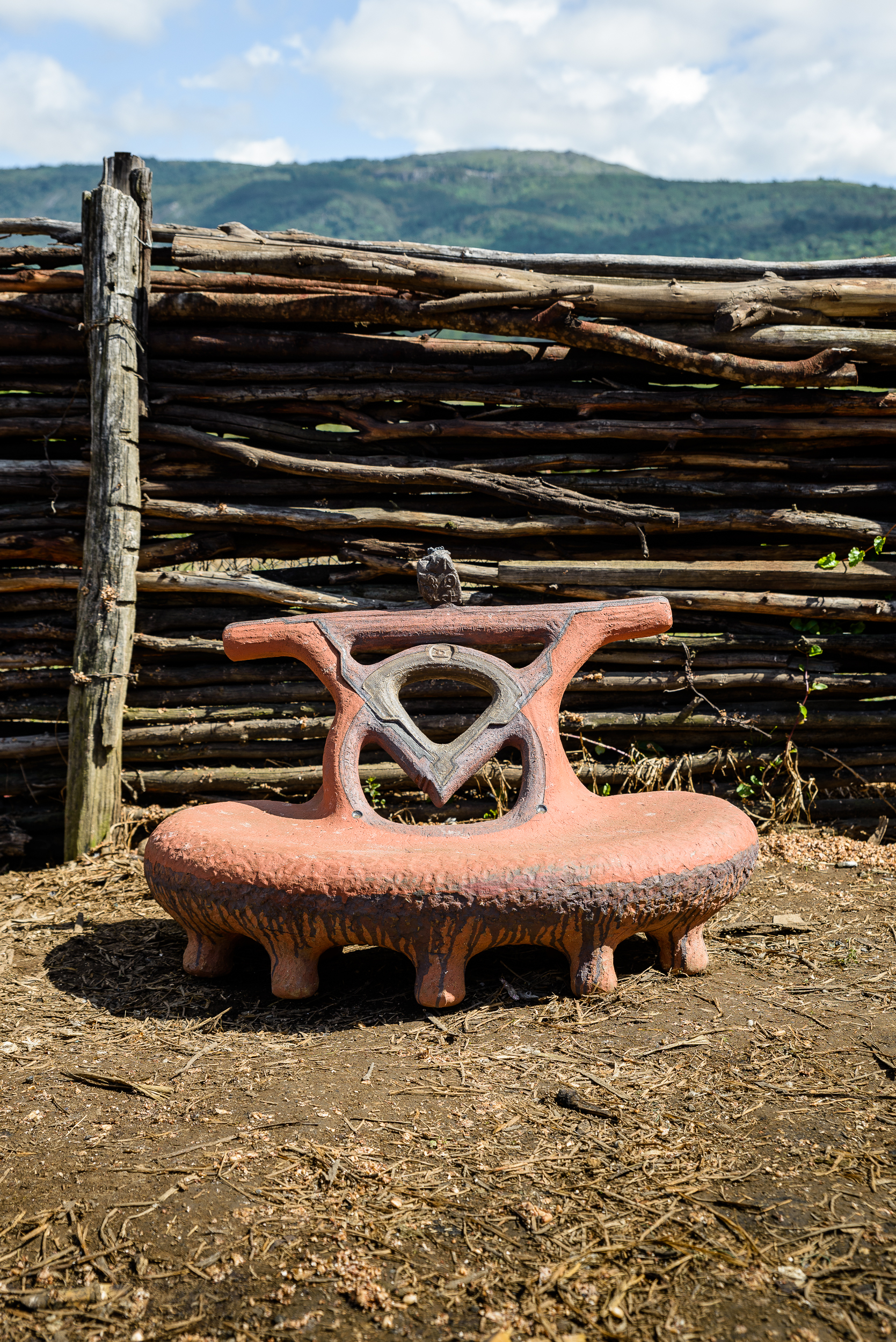
‘Umama’ (mother). ‘Central to the organisation of family and home, mothers bring a wealth of knowledge gained from their own maternal and social learnings. The strength and pride of family resides with her capacity to harness all efforts from members of the family clan and the community’
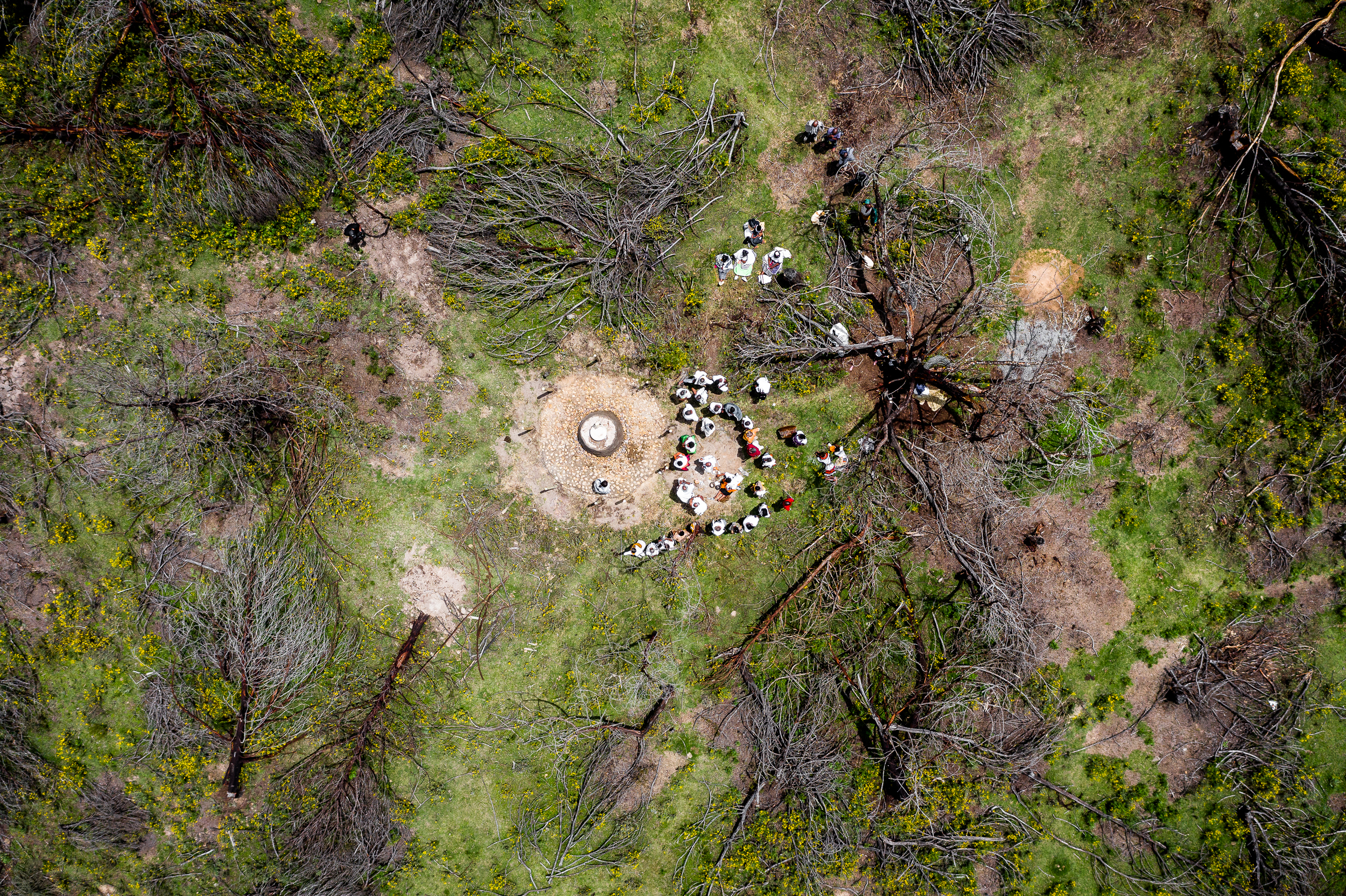
Another aerial view from Dyalvane’s visit to Ngobozana, Eastern Cape
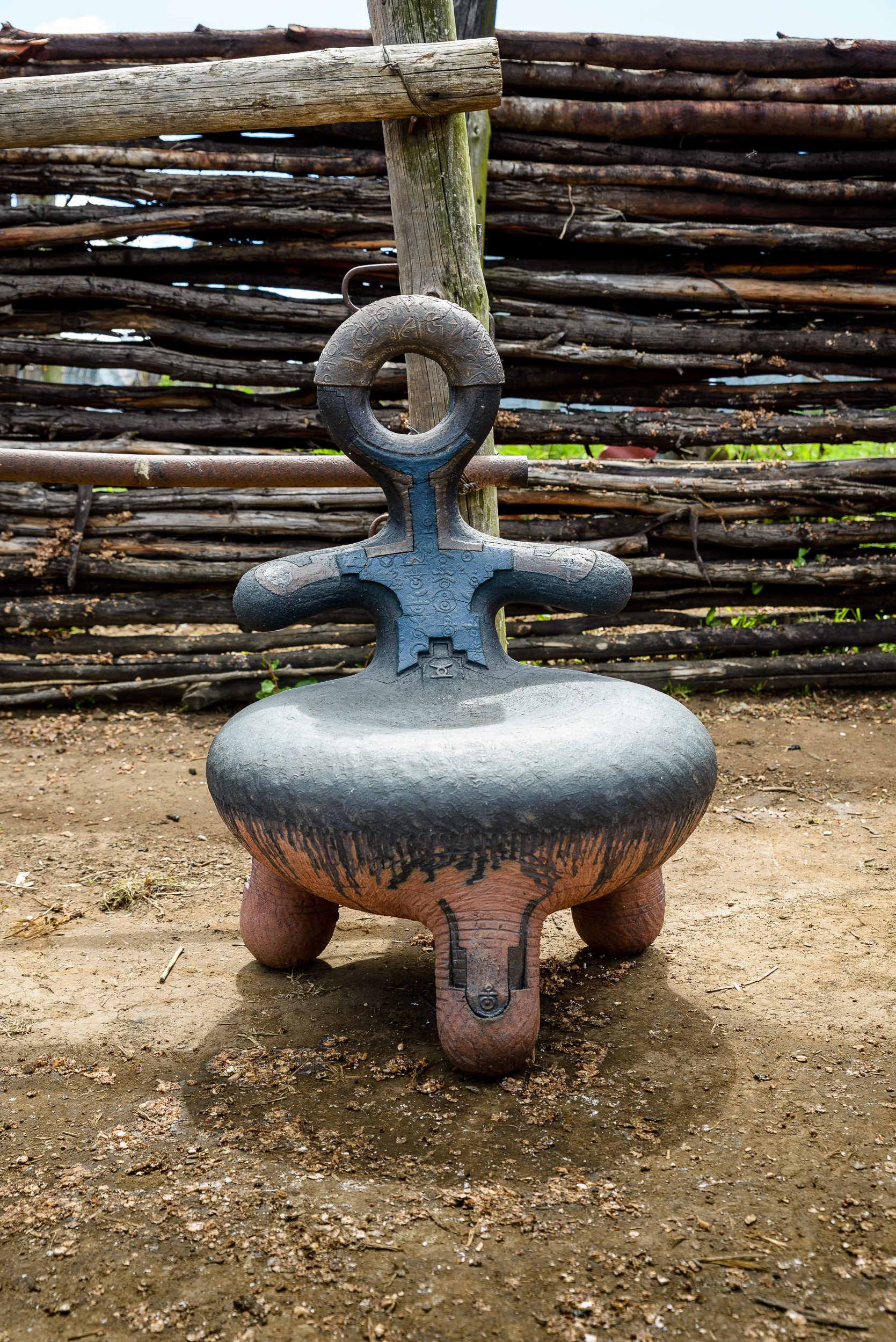
One of several pieces inspired by igubu (drums). ‘Music is important in my own creative process,’ insists Dyalvane. ‘My family and the village community I grew up in incorporate the transformative vibrational energy of the igubu drumbeat when we gather to remember our ancestral heartbeat and ancient belonging’
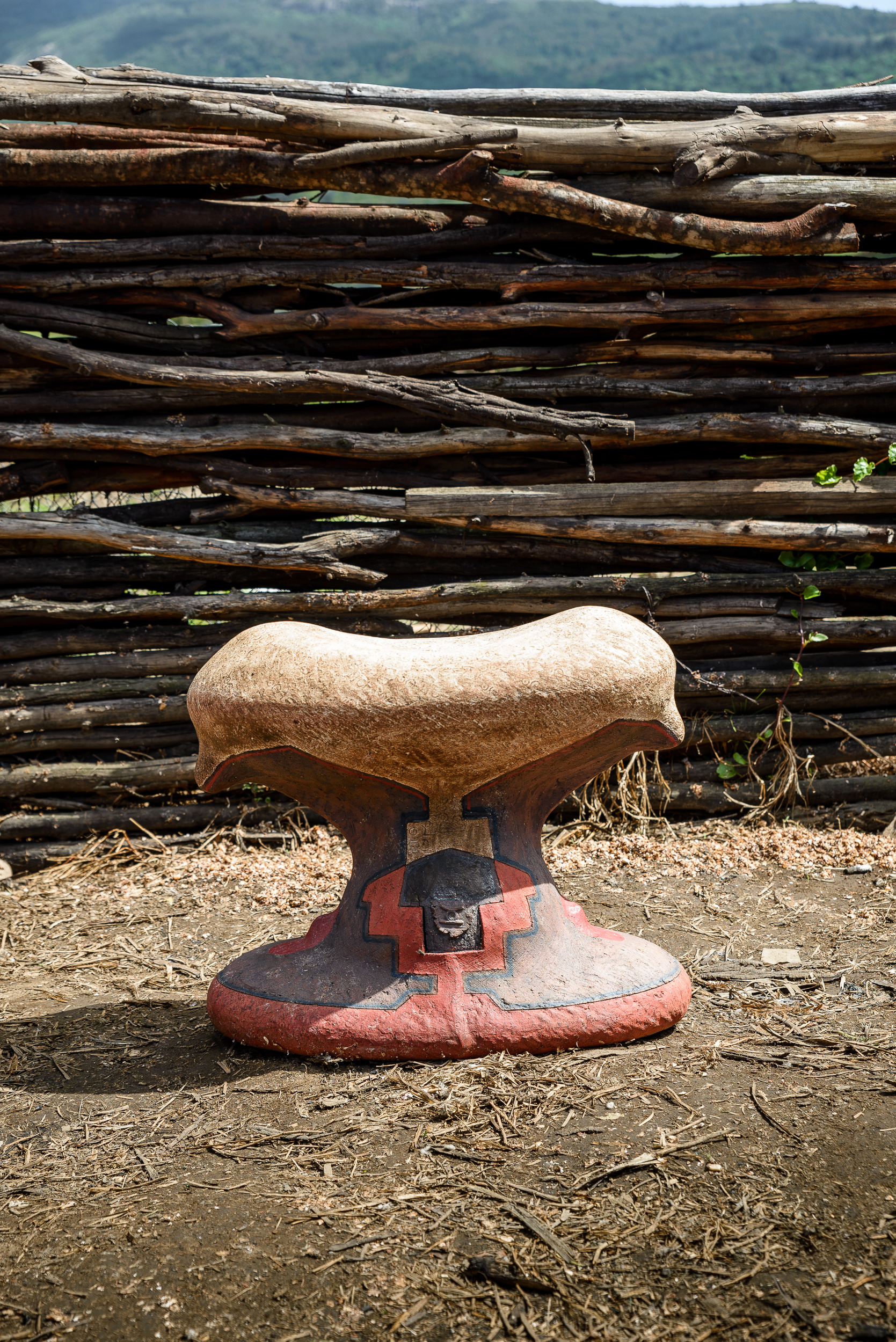
‘iThongo’, a piece representing the ‘ancestral dreamscape’ at the heart of the collection. ‘These symbols are a language that live in the land of dreams, often shared during family gatherings or healing consultations, or actualised through understanding as part of initiation within healer tutorage,’ says the designer
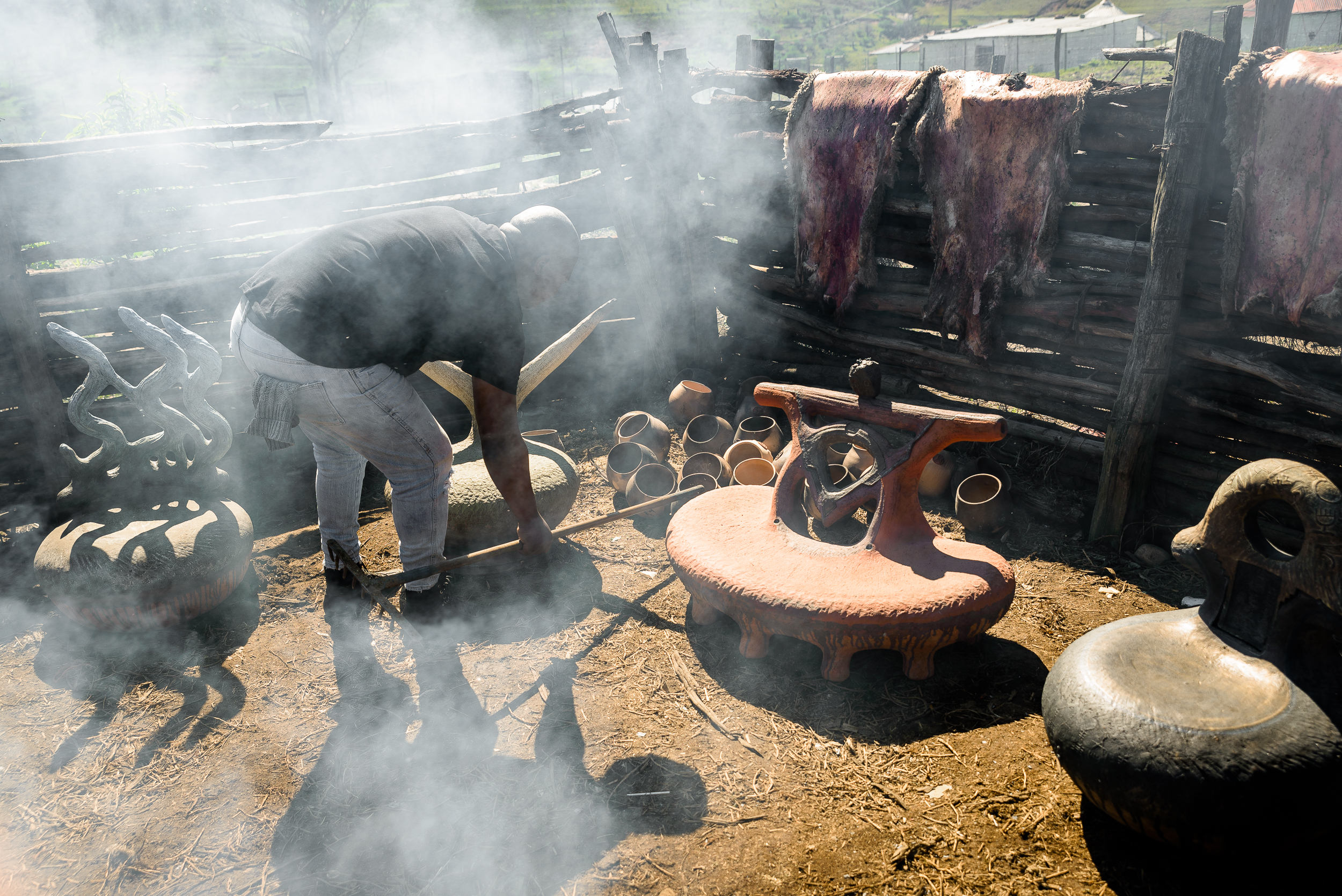
Another shot from Ngobozana, Eastern Cape, where Dyalvane’s collection travelled to before being displayed in Cape Town and New York
INFORMATION
‘iThongo’ by Andile Dyalvane is on view at Friedman Benda until 22 May 2021
friedmanbenda.com
Receive our daily digest of inspiration, escapism and design stories from around the world direct to your inbox.
ADDRESS
1st floor
515 W 26th St
New York
NY 10001
United States
Rosa Bertoli was born in Udine, Italy, and now lives in London. Since 2014, she has been the Design Editor of Wallpaper*, where she oversees design content for the print and online editions, as well as special editorial projects. Through her role at Wallpaper*, she has written extensively about all areas of design. Rosa has been speaker and moderator for various design talks and conferences including London Craft Week, Maison & Objet, The Italian Cultural Institute (London), Clippings, Zaha Hadid Design, Kartell and Frieze Art Fair. Rosa has been on judging panels for the Chart Architecture Award, the Dutch Design Awards and the DesignGuild Marks. She has written for numerous English and Italian language publications, and worked as a content and communication consultant for fashion and design brands.
-
 Modernism for sale: a Norman Jaffe-designed icon on Shelter Island hits the market
Modernism for sale: a Norman Jaffe-designed icon on Shelter Island hits the marketThe Osofsky House epitomised the glamour of high-end 70s modernism on Long Island. Now updated and refurbished, it’s back on the market for the first time in over two decades
-
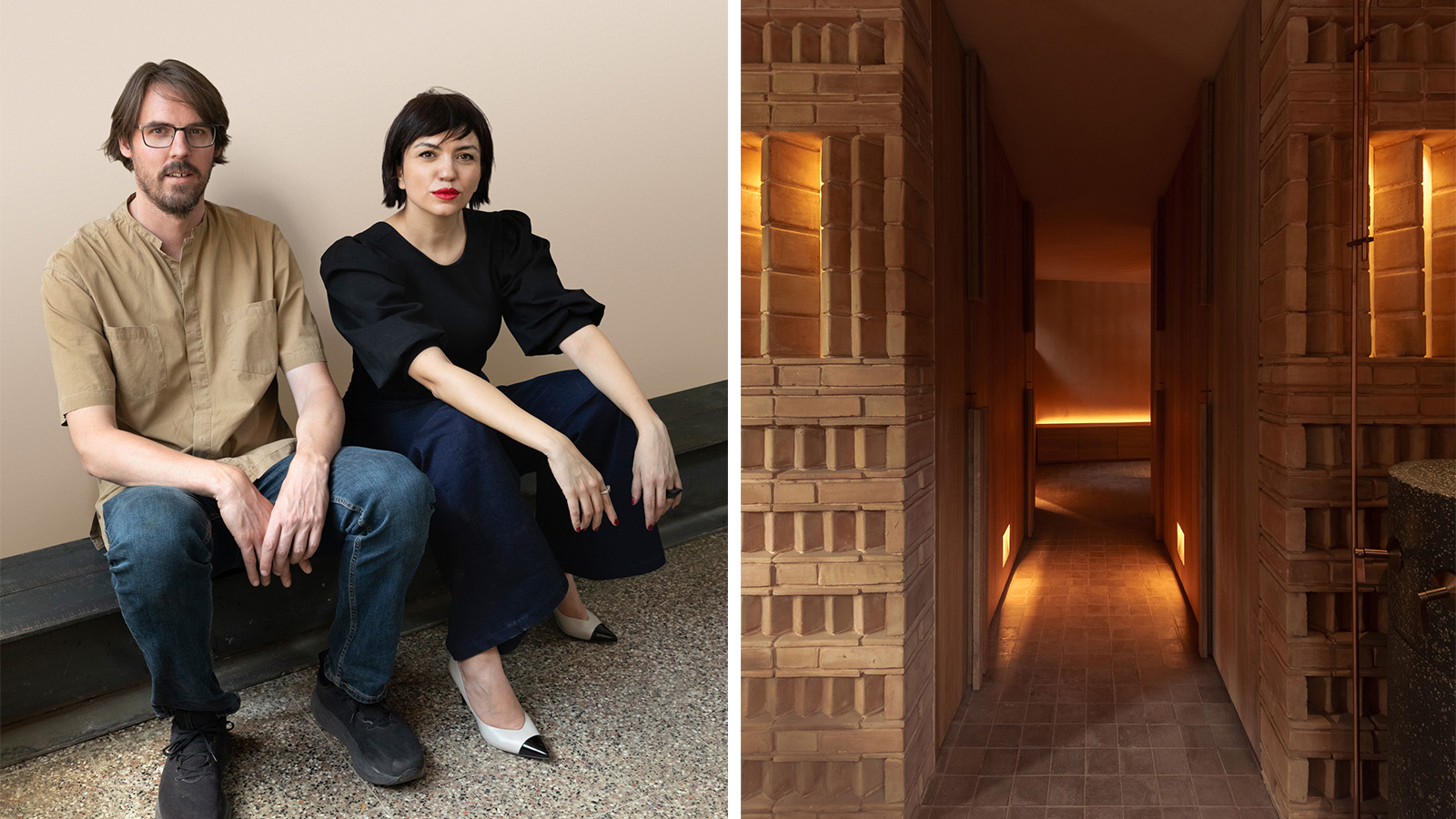 Discover Locus and its ‘eco-localism' - an alternative way of thinking about architecture
Discover Locus and its ‘eco-localism' - an alternative way of thinking about architectureLocus, an architecture firm in Mexico City, has a portfolio of projects which share an attitude rather than an obvious visual language
-
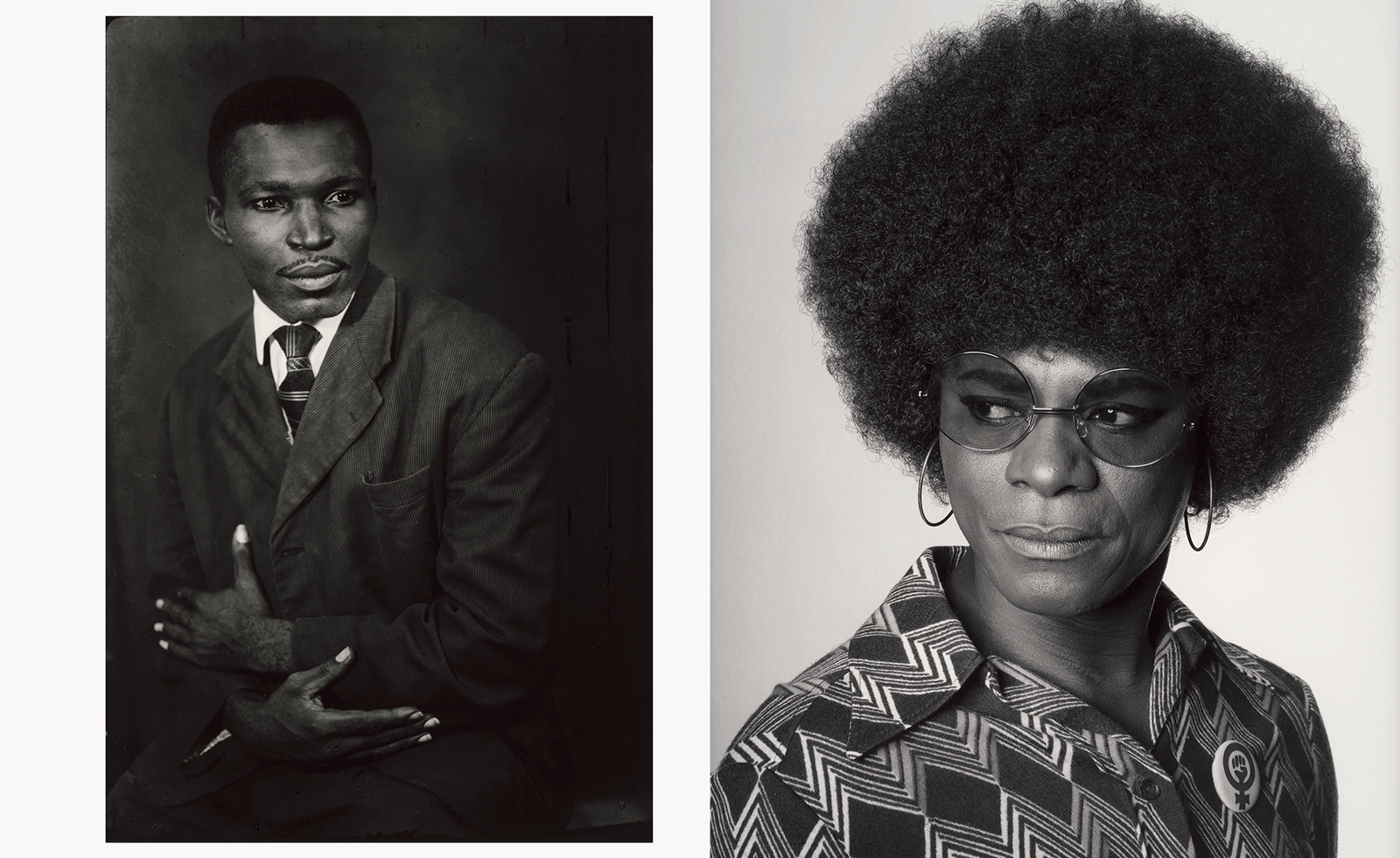 MoMA celebrates African portraiture in a far-reaching exhibition
MoMA celebrates African portraiture in a far-reaching exhibitionIn 'Ideas of Africa: Portraiture and Political Imagination' at MoMA, New York, studies African creativity in photography in front of and behind the camera
-
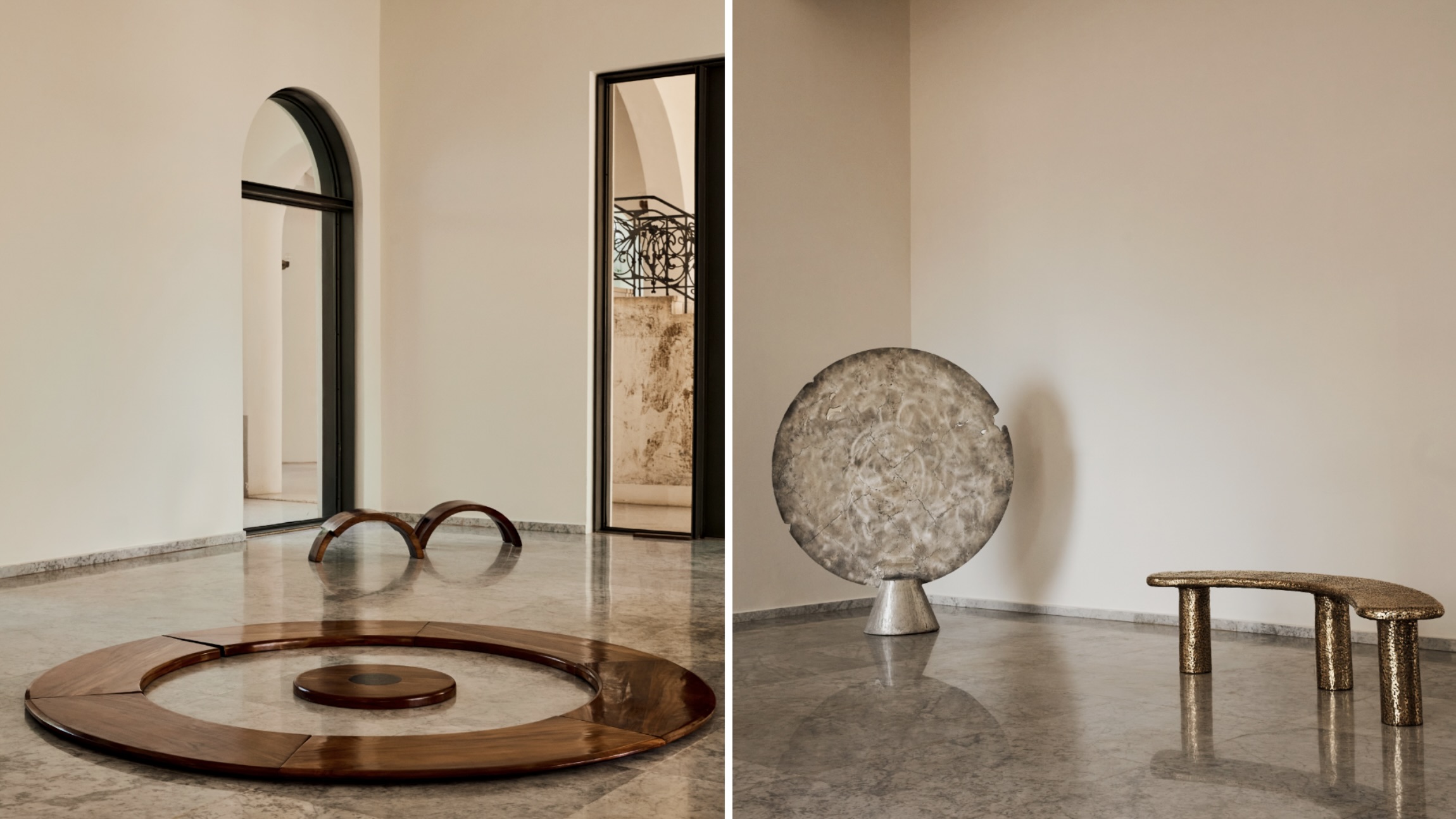 Togo's Palais de Lomé stages a sweeping new survey of West African design
Togo's Palais de Lomé stages a sweeping new survey of West African design'Design in West Africa' in Lomé, Togo (on view until 15 March 2026), brings together contemporary designers and artisans whose work bridges tradition and experimentation
-
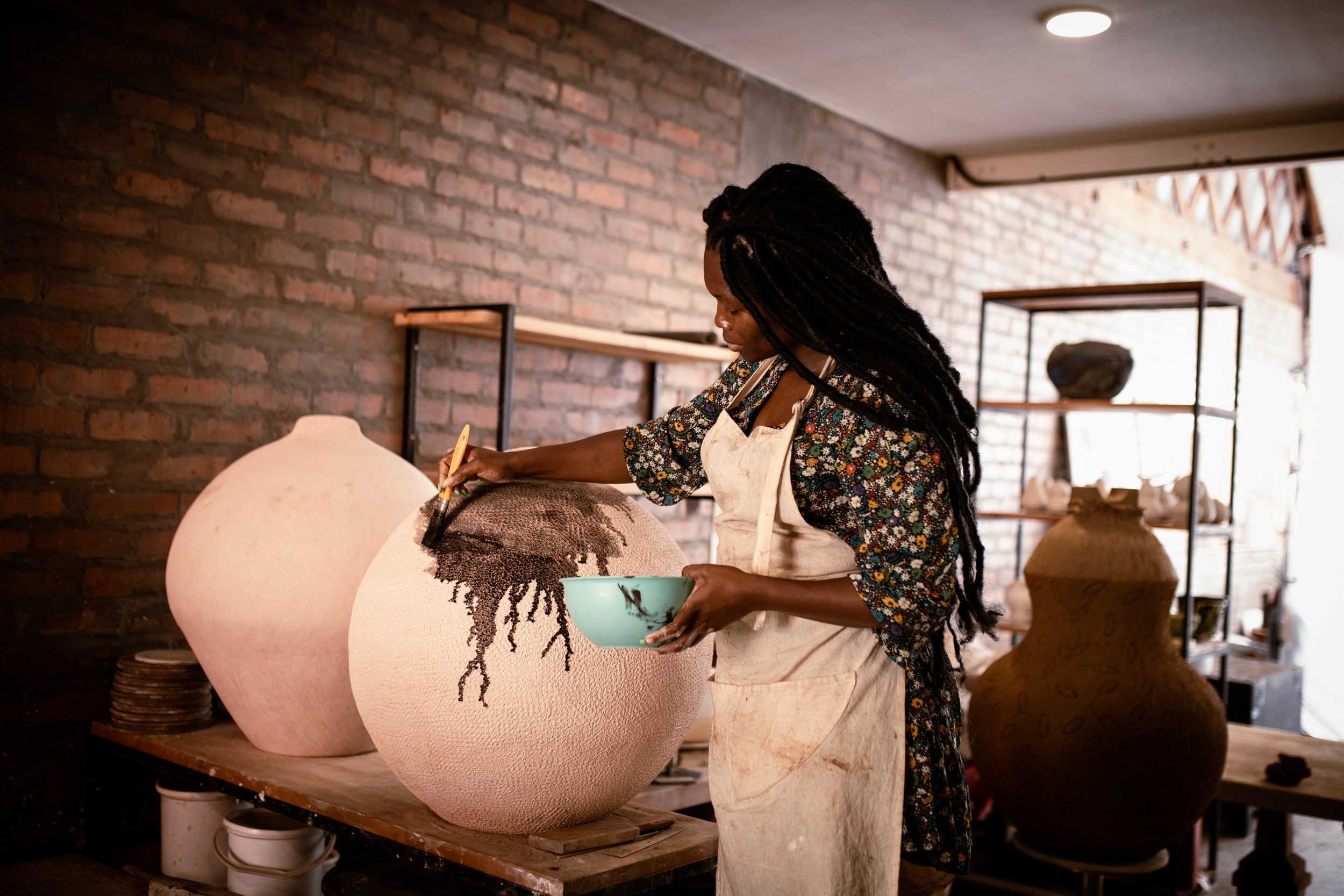 Zizipho Poswa: ‘I celebrate my heritage, and I forge my own way’
Zizipho Poswa: ‘I celebrate my heritage, and I forge my own way’South African designer and artist Zizipho Poswa talks about her iLobola collection and the traditions that inspired it, in a new video by Southern Guild Gallery in cooperation with BMW South Africa
-
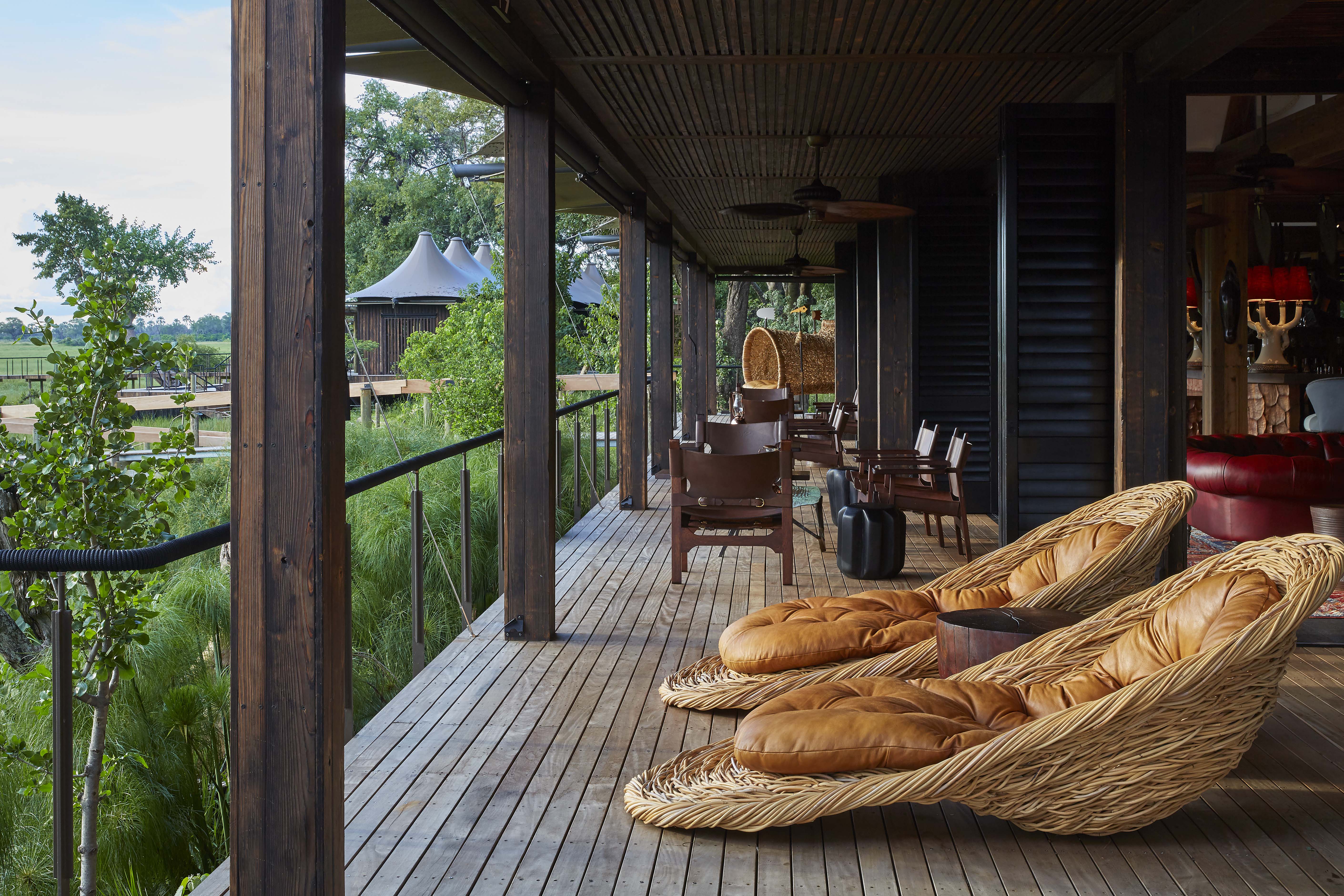 African art and design celebrated at the Xigera Safari Lodge
African art and design celebrated at the Xigera Safari LodgeLocated in Botswana's impressive Okavango Delta and immersed in nature, the Xigera Safari Lodge features a remarkable collection of African art and design pieces curated by South African gallery Southern Guild